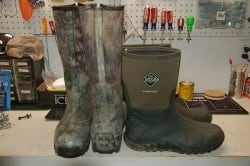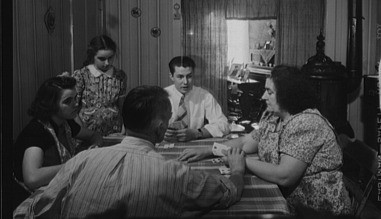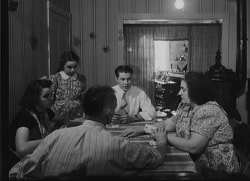
When it comes to our emergency preparedness, practice makes perfect. We cannot just throw a bunch of high-speed gear into a backpack and consider ourselves prepped for the trek to basecamp or our BOL. Not only do we need to be familiar with our gear but we also need to master the skills to implement this gear in a crisis. The best way that I know of to develop and maintain these skills is to get out in the field, setup various hypothetical situations and get to work!
10 Tips To Help You Trek To Basecamp
One of the ways that I implement my training is to put on my go bag and hit the trail for a couple day trek. With this type of training, I get to address various facets of my preparedness plan. First off, I trek out a minimum distance of 3 miles. This helps me to gauge how far I can move out as well as the time that it takes me to cover that distance. This is crucial information that I need to truly understand my capabilities as well as my limitations.

Since I am moving out on foot, I am limited on what I can bring with me to basecamp. This makes me focus much more on the contents of my go bag. The more often that I trek, the more that my gear choices get tweaked. Once you are in the middle of nowhere, with only the contents of your go bag to live off of… Let’s just say that I learn my lessons real quick when I forget to pack a piece of crucial gear.
We both realize that it’s one thing to believe that you are prepared. However, our goal is to know that we are ready for any crisis that comes our way. Continual practice and scenario training are a must if we hope to ride out an emergency situation. I realize that if I can bode well in the field for both myself and my family, we will have options that most of our neighbors will not. Options and choices are intangible items that greatly add to my chances of survival.
In order to make your trekking experience sustainable, it needs to be comfortable and even fun. If you have an awful experience every time that you move out on foot… You probably will not be investing time and effort in this type of valuable training. As we say in the United States Marine Corps Infantry…. You Need To Embrace The SUCK!
I want to share few tricks I keep up my sleeve that make the SUCK a hell of a lot more enjoyable. It’s never easy… But we made a decision to be prepared for both ourselves and our loved ones. If you want to increase your chances of survival, while maintaining a good amount of motivation, you need to lead from the front.
Let’s Get Right Into It…
Keeping A Well Packed Kit:
Having an inferior ruck or backpack is an issue right from the start. Your kit needs to be streamlined, durable and comfortable. Once you add a good backpack to your gear, you need to be able to pack it well. If your gear is continually shifting, with each step that you take, your experience will be a relatively awful one. This can also add to abrasions and other injuries to your back and shoulders.

Be sure to balance out your backpack so that it rides high and is stable. Tie down your gear with rope of 550 cord in order to keep the contents from shifting. This not only ensures that you will have a much more comfortable trek, but it will also keep your critical contents from getting damaged.
Maintain Your Spinal Alignment:
When we throw on a pack that is heavily weighted, we have the tendency to pitch forward. In the process, we either arch our back or round it. Either of these two options can cause a lot of pain and discomfort. As we progress through our trek and the miles begin to add up, we will greatly increase our chances for injury by maintaining this type of hiking form.

Maintaining good alignment is a must if you hope to not only reach your basecamp but be able to do work once you arrive. Once thing that I teach my NTC Members is called the Reset Pose. Basically, it is a three-point checklist that addresses proper spinal alignment. The three points are:
1. Stand Tall-
Picture a rope that is used to tie off a big ship, attached to the crown of your head. Now picture that rope pulling you up from your crown making you tall.
2. Shoulders Rolled And Packed Down-
Perform a couple of shoulder rolls. Hold the downward motion of your shoulder roll. Your shoulders are now packed down and integrated with your core allowing your body to operate as one machine.
3. Core Activation-
Imagine a big Mac truck coming at you and a collision is unavoidable. That tense activation that you feel throughout your body, minus your head and limbs, is the type of core activation that I am referencing here.
Those 3 points will always keep your spinal alignment where it needs to be. Keep in mind that the Reset Pose should be used any time that you are performing movement; especially when resistance and weight is added.
Footwear:
Wearing proper footwear is truly about personal preference. What may feel like walking on clouds to one individual, will feel like stepping on a bed of nails to another. What I want to address here, pertaining to footwear, is to always have a backup pair of shoes. Let me tell you a little story about a trek that I took, just a few days ago…

I had been sent an expensive pair of hiking shoes to review. If you have followed my work for a bit, you are well aware that I prefer minimalist shoes for all my activities. Since these new shoes were minimalist shoes, I decided to break them in and put them through my review process, while on a trek. I put them on and began to move out. They were comfortable, had great traction so I continued on the trail. About 2 miles in, I began to feel the ground even more that I usually do with minimalist shoes. I lifted my left foot up to adjust the shoe and realized that they heel of my shoe had completely come apart.
Here I was on rocky terrain, with only one shoe and a 75lb ruck strapped to my back.
Luckily, I always carry a backup pair of shoes in my go bag. I had to remove my pack, open up my kit and grab my back up hiking sandals. In the process I lost valuable energy as well as time. But it also reinforced the importance of keeping a backup pair of light footwear.
Hydration Needs:
Staying hydrated is important for any season but especially in warmer months and climates. Having an ample water supply from the start is a good idea. There are many usual water spots that can be capped off without notice. Relying on these water sources, across your route, may not be a smart strategy. Keep in mind that we are also training for emergency scenarios with our current practice. During an emergency, the route that you trek on, may not be the same route that you use to escape a crisis.

One of the ways that i address my water and hydration needs is with a hydration pack. Not only can I hold a fair amount of water in these types of bladders, but using the attached hose to gulp down water is ideal. When I have a heavy pack on my back, I’m not too prone to taking it off during my water breaks. My goal is to get to basecamp as quickly and efficiently as possible. After all, the real work will start once I get there.
Mess Gear:
Being able to have gear to cook with is obviously an important factor. When I am solo, I make due with the most minimal amount of mess gear. But when I am with my NTC Members or my family, I opt for good cooking gear that will provide us with tasty nutrition. We want to make our loved ones as comfortable as possible while we ride out the emergency. A tasty meal may be one of the few enjoyments, experienced during a SHTF scenario.

Latrine Kit:
When I am on a trek, I prefer digging a hole for all of my latrine needs. However, when trekking on State and Federal lands, digging a latrine may not be a legal option. As you are probably aware of, latrines in remote areas are not the cleanest or most sanitary places on earth. Bringing supplies to make the experience a bit more “digestible” is certainly recommended.

I have come across many people that seem to have stage fright when it comes to using latrines and even port-a-johns while in the field. This will not only make that person extremely uncomfortable but can also need to illness over time. Having a proper latrine kit while on the move is certainly something to consider.
Physical Fitness:
Yup… I harp on this all the time but only because it is so under-addressed with the survival community. Strapping on a 50-80 pound rucksack and moving out for miles is quite a challenge. When you add in difficult terrain and varied elevation… It certainly is no walk in the park. If your physical preparedness is not a skill that you possess, you will be setting yourself up for lots of pain and most likely… Failure!

Wear Long Pants & Long Sleeve Shirts:
It may seem a bit of a stretch to wear pants and shirts while on a trek; especially in the hot months. But keep in mind that even during jungle training, in the U.S. Marines, full BDU’s were always a must. There are many things along the trail that can impede your progress. Thorny plants and bush are forever reminders of this lesson. If the shrubbery is not enough… Then the insects will quickly solidify this lesson for you.

The weather elements also play a role in deciding to dress this way while on the trail. Sun, rain and even hail can wreak havoc on your experience when more of your body is exposed to it. Invest in good clothing that is light, comfortable and dry fast. They will last you for years and keep you on the trail, enabling you to accomplish your mission.
Insect Repellent:
Along the same lines as what we just discussed with clothing… Insect repellent is a must! Whether you are on the move or at basecamp, insect repellent will go a long way in keeping you comfortable. These critters carry all sorts of diseases that can diminish your chances of boding well during an emergency. When it comes to R&R… it will be very difficult to get proper rest when you have creatures buzzing in your ears all night.

Divide Up Your Group Gear:
There is a good chance that you are the leader of your preparedness group. With that role comes great responsibility. The pressure to lead and keep everyone safe if a stressful endeavor. As leaders we tend to, literally, want to carry everyone’s weight for them. Every uncomfortable scenario, every diversion from the plan, becomes your responsibility. It is who we are deep inside and we are obviously doing it out of love for our group members.

As leaders, we want to do everything to make other members more comfortable. This usually leads to the leader having an overweight rucksack while other members are basically carrying around a light day pack. This will not only make you a less effective leader, but will most likely take you out of commission at times where your group needs you the most. Be sure to divide up all of your group gear so that no one in your group, including you, becomes over-burdened. We can only move as fast as our slowest member. The more that anyone is overloaded, the greater the risk of injury. This certainly will not help in getting to your destination in a timely fashion.
Bottom Line:
Trekking can be an enjoyable experience, and it is for most. However, if you do not prepare accordingly, chances are that you will not look too favorably on trekking in general.

Keep in mind that trekking is recreational. But when the SHTF… You can either Embrace The Suck, or become a statistic. So get on the trail and train, hopefully you can use a few of the tips in this article to make your trekking something that you actually look forward to.

Follow us on Facebook, Instagram, Twitter, Pinterest, and Tumblr!
from SurvivalLife https://survivallife.com/10-tips-trek-basecamp/

 the long run? Well, go to your closet right now and ask yourself then, why exactly do you have so many different kinds of shoes and boots? Ha, caught you.
the long run? Well, go to your closet right now and ask yourself then, why exactly do you have so many different kinds of shoes and boots? Ha, caught you. considerable walking, running, hiking, or climbing? Maybe it is a mix of these prepper job tasks. If your prepper plans and movements demand a lot of time outside, then you will need sturdy, well made shoes with soles that have soft soil or mud terrain gripping capabilities. You don’t want to be slipping and sliding.
considerable walking, running, hiking, or climbing? Maybe it is a mix of these prepper job tasks. If your prepper plans and movements demand a lot of time outside, then you will need sturdy, well made shoes with soles that have soft soil or mud terrain gripping capabilities. You don’t want to be slipping and sliding.
 duty boots for most outside activities like perimeter patrolling, hunting, scouting, or defensive actions. Start by checking out lines of hunting related boots as these can serve well for cutting wood, working gardens, building projects, fencing, and other tough outside jobs. You’ll want lace up, waterproof and insulated versions if the weather is wet and cold.
duty boots for most outside activities like perimeter patrolling, hunting, scouting, or defensive actions. Start by checking out lines of hunting related boots as these can serve well for cutting wood, working gardens, building projects, fencing, and other tough outside jobs. You’ll want lace up, waterproof and insulated versions if the weather is wet and cold.























 phenomenon of cabin fever, which turns people in close proximity against each other, or having to pass time as a group through the night; how about when you have no choice but to wait for rescue? Here are a couple tips on how you can keep your mind occupied and avoid the passing of time getting to you…
phenomenon of cabin fever, which turns people in close proximity against each other, or having to pass time as a group through the night; how about when you have no choice but to wait for rescue? Here are a couple tips on how you can keep your mind occupied and avoid the passing of time getting to you…
